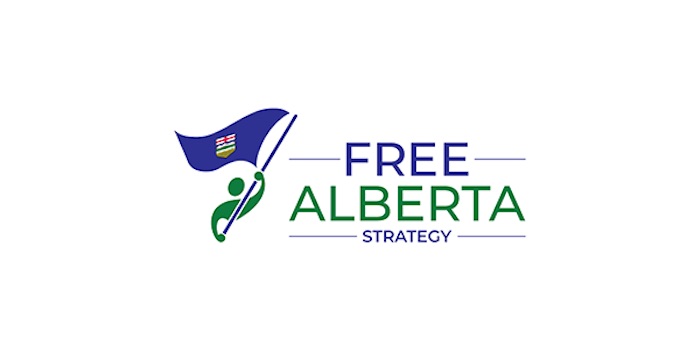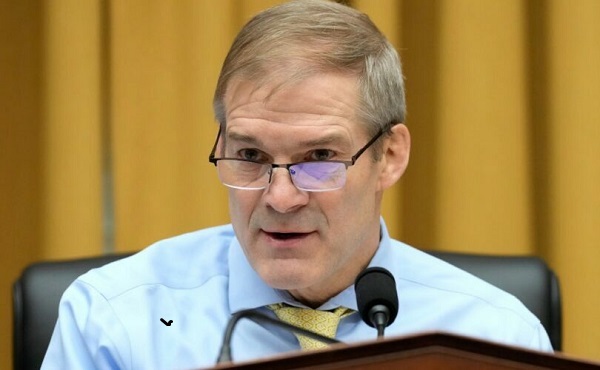Alberta
Writer opposing Free Alberta Strategy in national article confuses chartered banks with financial institutions

From the Free Alberta Strategy Team
In a new article published in the federal-government-funded “The Conversation” publication, Robert L. Ascah, a researcher at the also-federal-government-funded Parkland Institute, attempts to lay the hatchet to the Free Alberta Strategy.
In his piece, entitled “What the Free Alberta Strategy gets wrong about Canada’s banking system,” Mr. Ascah argues that the Alberta Independent Banking Act that is proposed in the Free Alberta Strategy report is unconstitutional because banking is an entirely federal area of jurisdiction.
Here is the key quote from Mr. Ascah:
“The Free Alberta Strategy, however, purports to allow Alberta to incorporate and regulate banks, which is clearly unconstitutional. There’s no mention that this proposal is beyond the powers of the provincial legislature.”
But, as so often seems to happen, this latest Free Alberta Strategy critic clearly doesn’t appear to have read – or taken the time to understand – what the Free Alberta Strategy is actually proposing.
While it’s true that “chartered banks” are federally regulated, that doesn’t mean that any type or form of “banking”, as the term is colloquially used, must be federally regulated.
Credit unions, for example, offer “banking” services, while not being “chartered banks” that are federally regulated.
This definition, while technical, is the crux of the issue.
And while we admit that this is very technical, when you’re talking about writing laws, technicalities matter a lot.
To be clear, here is the exact proposal from the Free Alberta Strategy report itself:
1. Expanding the number of provincially regulated financial institutions and credit unions;
2. Promoting private ownership of these new financial institutions; and
3. Mandating that all provincially regulated financial institutions and credit unions (including ATB) remain compliant with the Alberta Sovereignty Act as it relates to the non-enforcement of federal laws and court decisions deemed to infringe unduly on Alberta’s provincial jurisdiction.
You will note, very clearly, that this proposal in our Free Alberta Strategy report talks about “provincially regulated financial institutions” not “chartered banks”.
This is because the authors of the strategy understand (unlike Mr. Ascah, apparently) that while “chartered banks” must be regulated by the federal government, “financial institutions” can be regulated by the provincial government.
This is exactly why our Free Alberta Strategy report suggests modelling any new “banks” in Alberta on ATB Financial (previously known as Alberta Treasury Branches), which is a long-standing Alberta financial institution.
(Note: Although ATB is a crown corporation, our proposal envisages privately owned and operated financial institutions, not more government-owned and operated financial institutions. Just in case anyone was worried we were suddenly advocating for bigger government!)
Just as Alberta’s credit unions are not “chartered banks” and so are not federally regulated, ATB Financial is not a “chartered bank”, and so it is not regulated by the federal government.
ATB Financial is a “financial institution” that is provincially regulated by the Alberta government under the ATB Financial Act.
This is precisely what the Free Alberta Strategy report proposes – an increase in the number of provincially regulated financial institutions in Alberta.
We can clearly see then that, despite the claim by Mr. Ascah that provincial regulation of banking is unconstitutional, the mere existence of ATB is proof that our proposal is, in fact, constitutional.
The remainder of Mr. Ascah’s article goes on to argue that if Alberta unconstitutionally incorporated its own new “chartered banks”, the federal government would cut those banks off from being able to transfer funds to other banks in Canada, making them impractical for the public to use.
Maybe it’s true that the federal government would cut off any unauthorized provincial “chartered banks” from payment mechanisms.
But, given no one is proposing Alberta incorporate its own new “chartered banks”, this entire second half of the article is an irrelevant straw man argument.
Again, the Free Alberta Strategy proposes to incorporate new provincially regulated financial institutions, like ATB.
And, in case you haven’t noticed, ATB has not been cut off from being able to transfer funds to other banks by the federal government, because – shock – the existence of ATB is perfectly constitutional.
The real question then, is whether or not the first half of Mr. Ascah’s article, where he claims we are proposing to do something unconstitutional, is simply a misunderstanding, or a deliberately misleading diatribe.
Either way, such a fundamental error really makes you wonder why the Parkland Institute would allow the article to be published at all!
Are Parkland Institute staff no longer expected to read the thing they are publicly criticizing anymore?
Are The Conversation editors no longer expected to check whether their authors have their facts straight?
Perhaps the oddest part of this whole situation is that the Parkland Institute, where Mr. Ascah works, has previously written about the benefits of having an Alberta-based, Alberta-regulated financial institution!
They did so in a report that goes into detail explaining the difference between federally regulated chartered banks and provincially regulated financial institutions!
Even stranger still – which Parkland Institute researcher do you think it was who wrote this report?
Yes, you guessed it, it was Robert L. Ascah!
It gets worse…
Once upon a time, Mr. Ascah worked at Alberta Treasury, the government department that is responsible for regulating ATB.
Then, after he worked at Alberta Treasury, Mr. Ascah went to work at ATB itself, where he was responsible for government relations, strategic planning, and economic research.
That’s right folks…
Our Free Alberta Strategy critic, who attacked us by claiming that provincially regulated financial institutions are unconstitutional, actually worked as a senior executive at both the organization he claims is unconstitutional, and the organization that is supposed to regulate the thing that he claims is unconstitutional.
We must either believe, then:
- That Mr. Ascah, who has written about the benefits of provincially-regulated financial institutions, has worked for a provincially-regulated financial institution, and has worked for the organization that regulates provincially-regulated financial institutions, is somehow entirely unaware that provincially-regulated financial institutions are legal.
Or, we must believe:
- That Mr. Ascah perfectly understands that provincially-regulated financial institutions are legal and that that is how ATB is established, but that it’s somehow, all of a sudden, now beneficial for him to pretend that he doesn’t, and that anyone suggesting other financial institutions be regulated in that way is suggesting something “unconstitutional”.
How could it possibly be beneficial for Mr. Ascah to pretend that this idea is unconstitutional all of a sudden, I hear you ask?
Well, the answer to that question is actually the least confusing part of his article.
Contained right at the bottom of the article, under “Disclosure statement” (and conveniently excluded from most re-publications of the piece by the media) are 9 little words:
“Robert (Bob) L. Ascah is affiliated with Alberta NDP.”
Of course, affiliated with is a little bit of an understatement in this case.
Mr. Ascah has donated thousands of dollars to the Alberta NDP for many years, while several of his Parkland Institute colleagues are actually running as Alberta NDP candidates in the 2023 Alberta election!
Now, as a non-partisan organization, we generally try to avoid pointing out the political affiliations of individual people.
As an organization, we base our support for ideas on whether the ideas are good or not, rather than on who is proposing them.
But, in this case, we’re not criticizing the person proposing the ideas, but the lack of independence and the conflict of interest inherent in a situation where federal-government-funded researchers are published by federal-government-funded websites and re-printed by federal-government-funded newspapers.
Unfortunately, in a world where government-funded academics get government funding to write government propaganda published in government-funded media, there’s really no incentive to cover the truth anymore.
As to why the federal government would want to fund researchers to write propaganda for them, and fund media outlets to publish it for them, we’ll leave that one to you to answer!
In the end, this is exactly why we need more independent research and independent distribution of ideas in our society.
The Free Alberta Strategy jealously guards our independence.
That’s why we never accept any money or resources from any government, regardless of political stripe.
But that’s also why we need your help.
We need your help so that we can continue to do research and analysis on ways in which Alberta can fight back, such as the Sovereignty Act.
We need your help to further our work to protect Alberta’s interests from a hostile and divisive federal government in Ottawa.
We need your help to grow our supporter, activist, and volunteer network across our great province.
We need your help to share our work with like-minded friends and family in order to get the word out to as many members of the public as possible.
If you’re ready to help, click here:
Alberta
Alberta mother accuses health agency of trying to vaccinate son against her wishes

From LifeSiteNews
Alberta Health Services has been accused of attempting to vaccinate a child in school against his parent’s wishes.
On November 6, Alberta Health Services staffers visited Edmonton Hardisty School where they reportedly attempted to vaccinate a grade 6 student despite his parents signing a form stating that they did not wish for him to receive the vaccines.
“It is clear they do not prioritize parental rights, and in not doing so, they traumatize students,” the boy’s mother Kerri Findling told the Counter Signal.
During the school visit, AHS planned to vaccinate sixth graders with the HPV and hepatitis B vaccines. Notably, both HPV and hepatitis B are vaccines given to prevent diseases normally transmitted sexually.
Among the chief concerns about the HPV vaccine has been the high number of adverse reactions reported after taking it, including a case where a 16 year-old Australian girl was made infertile due to the vaccine.
Additionally, in 2008, the U.S. Food and Drug Administration received reports of 28 deaths associated with the HPV vaccine. Among the 6,723 adverse reactions reported that year, 142 were deemed life-threatening and 1,061 were considered serious.
Children whose parents had written “refused” on their forms were supposed to return to the classroom when the rest of the class was called into the vaccination area.
However, in this case, Findling alleged that AHS staffers told her son to proceed to the vaccination area, despite seeing that she had written “refused” on his form.
When the boy asked if he could return to the classroom, as he was certain his parents did not intend for him to receive the shots, the staff reportedly said “no.” However, he chose to return to the classroom anyway.
Shortly after, he was called into the office and taken back to the vaccination area. Findling said that her son then left the school building and braved the sub-zero temperatures to call his parents.
Following his parents’ arrival at the school, AHS claimed the incident was a misunderstanding due to a “new hire,” attesting that the mistake would have been caught before their son was vaccinated.
“If a student leaves the vaccination center without receiving the vaccine, it should be up to the parents to get the vaccine at a different time, if they so desire, not the school to enforce vaccination on behalf of AHS,” Findling declared.
Findling’s story comes just a few months after Alberta Premier Danielle Smith promised a new Bill of Rights affirming “God-given” parental authority over children.
A draft version of a forthcoming Alberta Bill of Rights provided to LifeSiteNews includes a provision beefing up parental rights, declaring the “freedom of parents to make informed decisions concerning the health, education, welfare and upbringing of their children.”
Alberta
Alberta’s fiscal update projects budget surplus, but fiscal fortunes could quickly turn

From the Fraser Institute
By Tegan Hill
According to the recent mid-year update tabled Thursday, the Smith government projects a $4.6 billion surplus in 2024/25, up from the $2.9 billion surplus projected just a few months ago. Despite the good news, Premier Smith must reduce spending to avoid budget deficits.
The fiscal update projects resource revenue of $20.3 billion in 2024/25. Today’s relatively high—but very volatile—resource revenue (including oil and gas royalties) is helping finance today’s spending and maintain a balanced budget. But it will not last forever.
For perspective, in just the last decade the Alberta government’s annual resource revenue has been as low as $2.8 billion (2015/16) and as high as $25.2 billion (2022/23).
And while the resource revenue rollercoaster is currently in Alberta’s favor, Finance Minister Nate Horner acknowledges that “risks are on the rise” as oil prices have dropped considerably and forecasters are projecting downward pressure on prices—all of which impacts resource revenue.
In fact, the government’s own estimates show a $1 change in oil prices results in an estimated $630 million revenue swing. So while the Smith government plans to maintain a surplus in 2024/25, a small change in oil prices could quickly plunge Alberta back into deficit. Premier Smith has warned that her government may fall into a budget deficit this fiscal year.
This should come as no surprise. Alberta’s been on the resource revenue rollercoaster for decades. Successive governments have increased spending during the good times of high resource revenue, but failed to rein in spending when resource revenues fell.
Previous research has shown that, in Alberta, a $1 increase in resource revenue is associated with an estimated 56-cent increase in program spending the following fiscal year (on a per-person, inflation-adjusted basis). However, a decline in resource revenue is not similarly associated with a reduction in program spending. This pattern has led to historically high levels of government spending—and budget deficits—even in more recent years.
Consider this: If this fiscal year the Smith government received an average level of resource revenue (based on levels over the last 10 years), it would receive approximately $13,000 per Albertan. Yet the government plans to spend nearly $15,000 per Albertan this fiscal year (after adjusting for inflation). That’s a huge gap of roughly $2,000—and it means the government is continuing to take big risks with the provincial budget.
Of course, if the government falls back into deficit there are implications for everyday Albertans.
When the government runs a deficit, it accumulates debt, which Albertans must pay to service. In 2024/25, the government’s debt interest payments will cost each Albertan nearly $650. That’s largely because, despite running surpluses over the last few years, Albertans are still paying for debt accumulated during the most recent string of deficits from 2008/09 to 2020/21 (excluding 2014/15), which only ended when the government enjoyed an unexpected windfall in resource revenue in 2021/22.
According to Thursday’s mid-year fiscal update, Alberta’s finances continue to be at risk. To avoid deficits, the Smith government should meaningfully reduce spending so that it’s aligned with more reliable, stable levels of revenue.
Author:
-

 Aristotle Foundation2 days ago
Aristotle Foundation2 days agoToronto cancels history, again: The irony and injustice of renaming Yonge-Dundas Square to Sankofa Square
-

 armed forces2 days ago
armed forces2 days agoJudge dismisses Canadian military personnel’s lawsuit against COVID shot mandate
-

 Business1 day ago
Business1 day agoCBC’s business model is trapped in a very dark place
-

 conflict2 days ago
conflict2 days agoUS and UK authorize missile strikes into Russia, but are we really in danger of World War III?
-

 International2 days ago
International2 days agoElon Musk, Vivek Ramaswamy Outline Sweeping Plan to Cut Federal Regulations And Staffing
-

 Alberta21 hours ago
Alberta21 hours agoAlberta fiscal update: second quarter is outstanding, challenges ahead
-

 Energy2 days ago
Energy2 days agoWhat does a Trump presidency means for Canadian energy?
-

 Censorship Industrial Complex1 day ago
Censorship Industrial Complex1 day agoCongressional investigation into authors of ‘Disinformation Dozen’ intensifies






